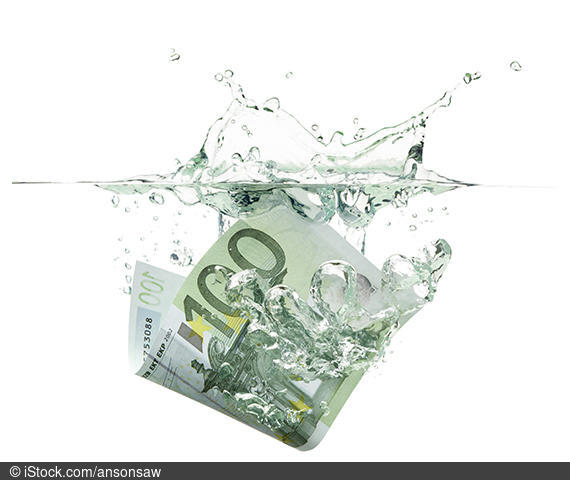Price Comparison Sites on the Internet – Customers of Incumbent Suppliers Are Left to Foot the Bill
ResearchTwenty years ago, the liberalisation of the German electricity market put an end to the monopoly position of local electricity suppliers and made it possible for end consumers to switch to alternative suppliers. Despite this liberalisation, incumbent electricity companies tend to increase their baseline electricity tariffs if more consumers search for cheaper tariffs on the internet. At the same time, they lower the rates of their cheaper tariff option offered in addition to their baseline tariff. These prices are, however, still significantly higher than the electricity tariffs of competing suppliers. Hence, consumers searching for cheaper electricity suppliers online benefit from lower prices, whereas households who remain in the more expensive baseline electricity tariff face additional costs. These are the findings of a study conducted by the Centre for European Economic Research (ZEW), Mannheim, in collaboration with MINES ParisTech, the University of Vienna and the Vienna University of Economics and Business. The study is based on data on the German energy economy from Ene’t, a German software and data provider for the electricity industry.
With the market liberalisation, consumers are automatically being supplied with electricity by their incumbent energy provider at the baseline electricity tariff.In the period between 2010 and 2015, end consumers in the baseline tariff paid an average of 1,006 EUR per year for electricity. However, consumers can inform themselves about cheaper tariffs – for instance by using price comparison sites – and to switch to a cheaper tariffs of the incumbent or to an alternative supplier. In the considered period, the average price found on price comparison sites was 929 EUR per year for the cheapest tariff offered by incumbents. In contrast, the average tariff offered by competing retailers was 808 EUR – well below the baseline tariff.
The study also shows that incumbent suppliers respond to consumers’ increased online search activities on price comparison sites by raising their baseline tariffs, while at the same time lowering their cheaper tariffs.If, for instance, search activity rises by ten per cent, incumbents increase their baseline tariffs by 0.38 per cent and lower the price of their more competitive, cheaper tariffs by 1.16 per cent. In contrast, the already low tariffs of the other electricity retailers experience only a minor decrease of 0.32 per cent when search activity goes up.
The price discrimination rises with the intensity of the online search
Research findings further indicate that price dispersion increases with growing search intensity. A ten per cent increase in consumer search activity creates a 2.7 per cent gap between incumbents’ baseline tariffs and tariffs of alternative electricity suppliers, while the price discrimination between the baseline tariffs and their cheaper tariffs, even rises to 13.7 per cent. At the same time, the difference between the cheapest tariffsof the incumbentsand the cheapest tariffs by the competing retailers decreases by 13.6 per cent.
“Naturally, incumbents have a strong incentive to prevent customers from switching to another supplier by offering a cheaper tariff option themselves. The higher the number of customers that are willing to switch – who, in economic terms, are characterised by lower search costs – the the more the incumbents decrease their cheaper tariffs. In return, however, they then raise their baseline tariff in order to increase their margins from customers with high search costs, i.e. customers who are unlikely to switch to a cheaper provider. These include, for instance, older people who are less familiar with the internet and price comparison sites,” explains Assistant Professor Sven Heim, ZEW Research Associate of the Research Department “Economics of Innovation and Industrial Dynamics” and co-author of the study.
Many consumers remain loyal
Despite these price strategies, there are many consumers who are loyal to their local incumbents. In 2015, a total of 76 per cent of private households continued to buy electricity from incumbent suppliers, with 33 per cent paying the more expensive baseline tariff and 43 per cent having switched to the cheaper tariff option. By then, merely 24 per cent of customers had switched from their local supplier to an alternative, cheaper provider. This is the case despite the fact that households are facing hardly any hurdles when switching since the new suppliers usually cancel and register contracts for their new customers. What is more, changing one’s supplier pays off financially. The average two-person household in Germany can save an average of 200 EUR per year by switching from an incumbent provider to a competing supplier.
German households seem to be following this trend: Between 2006 and 2014, the share of households that changed their electricity supplier rose from 1.71 to 9.38 per cent. “The more end consumers search for cheaper electricitIncumbent electricity companies tend to increase their basic electricity tariffs when consumers search for cheaper tariffs on the internet.y suppliers on the internet, the more people benefit from lower electricity prices. The ones that are losing out are consumers who remain in the expensive basic tariff of incumbent suppliers. The possibility of switching to other energy suppliers creates therefore winners as well as losers among consumers,” concludes Heim.
For more information please contact
Prof. Dr. Sven Heim, Phone +33 (0)140 51 94 62, E-mail sven.heim@mines-paristech.fr
